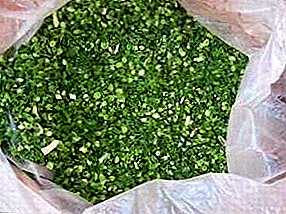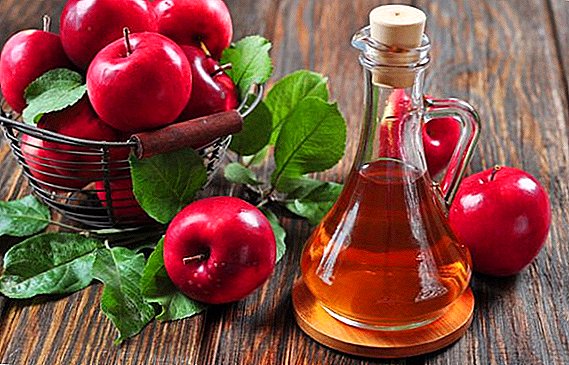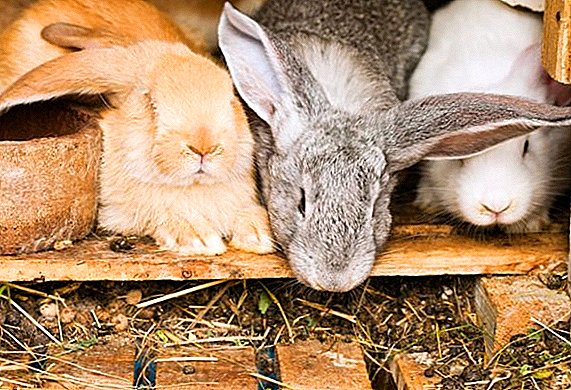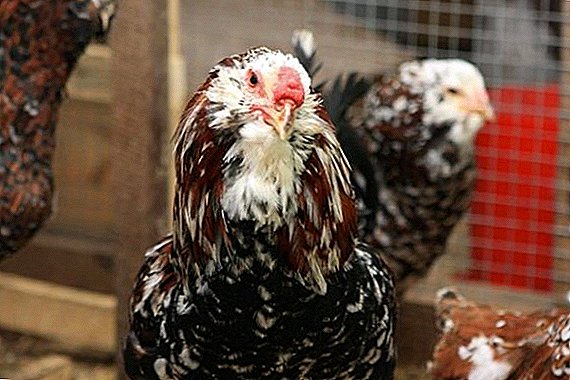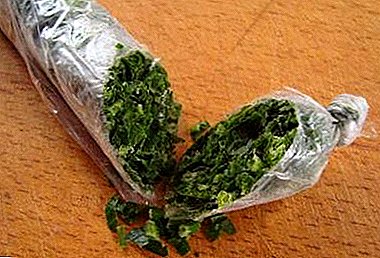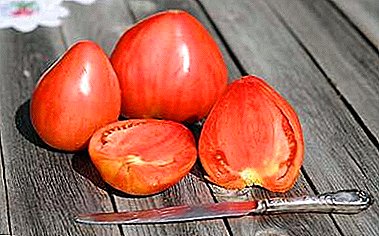
Bull heart Perhaps this sort of tomato is known to all gardeners and gardeners. Both experienced and beginners. Although the cultivation of this variety can not be called simple, however, it remains the most popular when planting for a decent harvest.
Although species of this variety are already known under the names Bullish Heart Pink, Orange, Black, now it will be a question of the variety “Bullish Heart Red”.
In this article we will present to your attention a complete description of the variety, we will acquaint you with its characteristics and cultivation features.
Tomatoes Bull Red Heart: variety description
 The plants of this variety are determinant; they are distinguished by a strong spreading shrub with a small amount of leaves, of usual shape and color. The variety is intended for cultivation in open ground in the south of Russia, when grown in the middle lane and Siberia, it is better to use a greenhouse to increase the period of fruiting.
The plants of this variety are determinant; they are distinguished by a strong spreading shrub with a small amount of leaves, of usual shape and color. The variety is intended for cultivation in open ground in the south of Russia, when grown in the middle lane and Siberia, it is better to use a greenhouse to increase the period of fruiting.
Plant height varies from 150 to 175 centimeters when grown in open ridges, can reach 200 centimeters when planted in the greenhouse. The shrub is usually formed into two trunks. The second trunk is formed from the first stepchild. The remaining stepsons are periodically removed. The plant is of average ripening period, reaches technical maturity in the period from 125 to 132 days after planting the seeds to obtain seedlings. Of the characteristics of the variety, it should be noted the different shape and size of the fruits on one bush.
And the first fruits on the bush are the largest. Requires binding of not only the bush, but also individual brushes that can come off due to a decent weight of the fruit. The fruits of tomatoes of this variety have a well-marked red color, dense to the touch, rather fleshy. The shape of the tomatoes is different even on the same plant. Forms a brush, in which usually 4-5 fruits. The first fruits are often heart-shaped, rather large.
Specifications
"Bull's heart is red" tomato is really not small and reaches a weight of 300 to 500 grams. With a small amount of ovary can reach 800-850 grams of weight. Subsequent fruits round shape, significantly less mass. Reach weights from 150 to 220 grams.
The use of fruits is universal, although it is more often used as a salad variety.. Tomatoes taste slightly sweet - sour. Possess good transportability. With a long stay on the bush in a state of maturity prone to cracking.
With a planting pattern of 40 × 50 centimeters and the number of plants four per square meter when grown in open ridges yield ranges from 3.5 to 6.0 kilograms. When grown in a greenhouse, the yield is higher. About 8.0 to 12.0 kilograms.
A photo


Features of growing
Growing plants experienced gardeners recommend starting with planting seeds for seedlings, two months before planting in the ground. Before planting, conduct seed treatment from late blight with a solution of potassium permanganate. One liter of water takes 8-10 grams of potassium permanganate, in the resulting solution, tomato seeds are soaked for about half an hour.
After that, the seeds are washed with water and lightly dried. Before planting, seeds are soaked in wet tissue. Sprouted seeds are planted in a box, sealing them to a depth of 2.0-2.5 centimeters, put plenty of water in a warm, bright place. After the emergence of sprouts can be fertilized complex fertilizer such as "Gumat." After the appearance of 2-3 true leaves, a pick is required.
It will help the growth of the root system. When planting seedlings in the ground, after a couple of weeks, fertilizing with nitrogen fertilizer is carried out.. Urea is perfect. The solution is prepared at the rate of a tablespoon of urea per bucket of water. Watering 1.5-2.0 liters under the root of each plant. For further feeding, scatter a few urea granules in each well.
Nitrogen will slowly get to the roots with each watering. In the future, care will be limited to watering with a pair of fertilizing complex fertilizer. To increase the size of tomatoes, it is better to leave no more than 7-8 brushes on a bush.as well as limit plant growth. It is also recommended to remove the lower leaves, periodically break out the stepchildren.
Diseases and pests
 Perhaps one of the gardener's nightmares is late blight. A disease caused by a fungus can destroy the entire crop of tomatoes in your area in a few days. Late blight is translated as "plant eater". According to the assumptions of scientists the birthplace of late blight is Mexico.
Perhaps one of the gardener's nightmares is late blight. A disease caused by a fungus can destroy the entire crop of tomatoes in your area in a few days. Late blight is translated as "plant eater". According to the assumptions of scientists the birthplace of late blight is Mexico.
Most often it develops in hot weather, affects species related to tomatoes, such as eggplants, potatoes. For the prevention of the disease, it is recommended to burn last year's tops at the site. Tomato varieties resistant to late blight disease have been developed, but they are also not guaranteed against infection.
In order to prevent the recommended treatment of seeds in the manner described above. The spread of blight promotes increased humidity. Therefore, when signs of a disease appear, remove affected bushes and then burn them. Ventilate the greenhouse to reduce humidity. The rest of the plants to process the drug type "Fitoftorin-M" or "Gamar" exactly following the instructions on the package.
If you can not buy the drug, you can use a folk remedy. Prepared from 10 liters of water, a liter of milk, 25-30 drops of iodine. Mix thoroughly, spray the plants. This solution is most effective for tomatoes. For the prevention of late blight, experienced gardeners recommend introducing a glass of wood ash into each well before planting seedlings.
Probably all gardeners will call on their site pest number 1 Medvedka. He eats everything he can get to. Prefers soils well fertilized with manure. Digging in to a depth of about 15 centimeters, lays about 300 eggs. In less than a month, the hatched pests go outside. If you find a withered plant in the area, look for a bear's nest nearby.
You can destroy it by pouring into the burrow half a liter of infusion prepared from 10 liters of water and 150 grams of hot pepper. Whitefly is one of the most unpleasant pests. This pest never appears alone. Therefore, it is impossible to view these pests. Spraying with an extract of 150 grams of minced garlic infused for five days in a liter of water effectively helps. Installation of racks painted in yellow and smeared with castor oil also helps.




